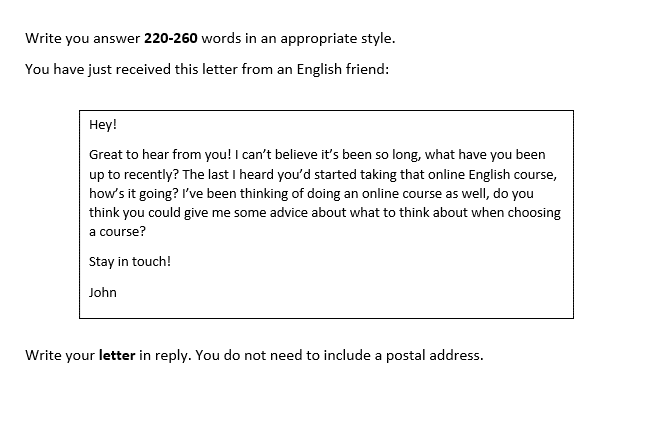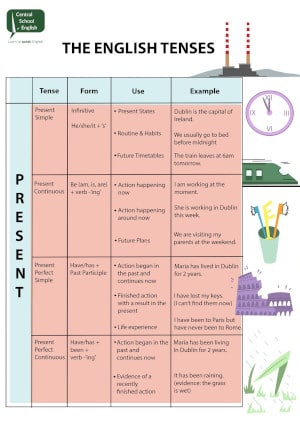How to write an Email or Letter for the Cambridge CAE Exam

In this CAE Exam class, we’ll look at how to write an email or letter for the writing test.
So, you’re thinking of taking an Advanced exam? Welcome to this series of posts about the Cambridge C1 Advanced exam, sometimes known as the CAE exam – that is the Certificate of Advanced English. The whole exam is divided into four different ‘papers’ – Reading & Use of English, Writing, Listening, and Speaking. This page offers a guide to the second part of the Writing Exam in the Cambridge Advanced (C1) Exam in which you have to write either an email or a letter, what it tests, how to approach it and how to revise for it. Don’t be afraid, Writing part 2 – let’s go!
General Information about the Writing Exam
The Writing exam lasts for an hour and a half (90 minutes). There are two parts to the Writing exam – in Part 1 you have to write an Essay, and in Part 2 you will be given three options from four (or five, depending on how you count them!) possibilities, and you choose one of them to do. The four (or five) possibilities for Writing part 2 are an Email, a Letter (which is exactly the same as an email, really, so you may as well consider them together – as we will here), a Report, a Review, or a Proposal. You have to write the same number of words for each piece of writing: 220-260 words, so you can divide the exam time equally between them – 45 minutes on Part 1, and 45 minutes on Part 2. However, time keeping is up to you – you could spend more time on one of the tasks and less on the other, but that’s not recommended.
What the test involves
As mentioned above, in Part 2 of the Writing exam you will be given three choices from four/five possibilities: an Email/Letter, a Report, a Review, or a Proposal. In this blog post we’re going to focus on how to write the different types of Email or Letter.
In the exam you will be given a short input text which will explain the context that you need to write in, and this will also include at least two points that you must include in your writing.
Time
45 minutes approx. (of the total 90 minutes for the exam)
What's being tested
Your ability to communicate information in letter/email form. Being able to correctly identify the style to be used (formal or informal language) and use suitable and appropriate grammar and vocabulary to complete the function of the writing.
Learn to SPEAK English
Join a live online English tutor to get help with your English or study at our school in Dublin, Ireland.
Individual and group classes with our expert teachers.
General English | FCE Exam Preparation | CAE Exam Preparation
How to do Writing part 2 - Letter/Email
Read the task
The first thing to do is to study the task input. There are also four questions you should ask yourself before you begin to plan and write your piece:
- Who am I writing to?
This is the first thing you obviously need to know.
- What is my connection/relationship to the person you’re writing to?
When you know who you’re writing to, you should consider your connection to that person. Once you’ve done that, you will be able to decide whether you need to use Formal or Informal English in the writing.
- Why am I writing? What is the function of this letter/email?
There are various different reasons for you to be writing in the exam. You could be starting communication with the recipient or you might be replying to someone. You could be making a complaint, apologising for something, asking for information, providing information, asking for advice, giving advice, making recommendations or suggestions, giving recommendations or suggestions etc…
- What things must I include in the writing?
The input text will include at least two, more likely three, things that you’ll need to write about in the letter/email.
Once you’ve asked yourself and answered those four questions, you’ll be ready to start preparing your ideas.
Make a plan
The plan doesn’t need to be particularly detailed – just some brief notes on what you want to include in each paragraph.
You should begin the letter/email with an appropriate greeting – greetings are words or phrases like “Dear ____”, “Hi ______”, “To whom it may concern” etc…
You then need to consider how many main paragraphs you’re going to need for the piece. There should be one paragraph for each of the main points that you must including, according to the input text. Now, it is possible for you to join ideas together into one paragraph if they are suitably connected to each other. There isn’t a set number of paragraphs you should use for the letter/email, but I would recommend using at least two (excluding the greeting and closing remarks).
Speaking of closing remarks – these are words or phrases like “I look forward to hearing from you”, “Please let me know if you require any further information”, “Write back soon!”, “Send my love to the family!” etc…
The final thing will be your goodbye phrase: “Yours sincerely”, “Yours faithfully”, “Bye!”, “See you soon” etc…
Formal or Informal English?
Have a look at this table to see some suitable greetings, closing remarks, goodbyes and grammar points in Formal and Informal English. This is far from a complete list.
| FORMAL | INFORMAL | |
| GREETINGS | Dear Sir/Madam*,
Dear Mr ____ / Mrs _____ To Whom it May Concern |
Hi,
Dear + first name |
| CLOSING REMARKS | I eagerly await your response
Please do not hesitate to contact me if you require any further information |
I’m looking forward to hearing from you
Let me know if you need any more information |
| GOODBYES | Yours faithfully*
Yours sincerely** Best regards Kind regards |
Love from
From Best wishes Hugs and kisses |
| GRAMMAR | Passive voice
Inversions Complex and compound tenses Conditionals No contractions (do not, is not) |
Phrasal Verbs
Conditionals Colloquial language Contractions (don’t, isn’t) |
*If you begin a Formal letter/email with “Dear Sir/Madam”, you should say goodbye with “Yours faithfully”.
**And if you begin “Dear Mr/Mrs _____”, you should end with “Yours sincerely”.
How to organise your time
You should spend about 45 minutes on Part 2 of the exam (and 45 minutes on Part 1). It is up to you exactly how you arrange your time, but I would suggest something like this:
5-10 minutes – Plan and think of ideas
25-30 minutes – Write
5-10 minutes – Check for spelling/grammar mistakes
Frequently Asked Questions
What happens if I don’t write enough words?
You will lose points for the Content of your essay as you obviously haven’t developed the ideas sufficiently.
What happens if I write too many words?
The examiners will find word 260, and then stop counting, so any words from the two hundred and sixty-first to the end of your essay will be ignored. This could mean that a whole section of your essay (likely the conclusion) will not be considered. You’ll then lose points for the Content (no conclusion and probably no decision as to which topic is best); and lose points for Organisation.
What happens if I accidentally use Formal English when I should use Informal English?
If it only one mistake, it’ll probably be fine – but if you’ve written the entire piece in the wrong register then you will lose points.
I hate writing letters and emails; do I have to write one?
No. In the exam you’ll be given three choices for Part 2 – you only need to choose one of them. If you don’t want to write a letter or email, you don’t have to.
Tips
In Formal English phrasal words can be used if you absolutely cannot think of anything else to write BUT you should try to avoid them as much as possible. Phrasal Verbs are more commonly found in Informal English.
You should try to show off your English language skills and abilities, so try to include a variety of different grammar points and a wide range of vocabulary. If you can include Passives, Conditionals, Inversions, Complex tenses, Past Modal Verbs etc… your letter/email will get a high mark for its Language. You can find more information about these grammar points here.
Test Yourself
Now have a go at this example task.

When you have finished you can send your letter to the school in an email and we will correct it and sent it back to you! Just write Exam Guide Letter C1 in the Subject line of the email.
Thank you for reading our post. For more information about the Cambridge C1 Advanced Exam (CAE) you can check out the official site here.
You’ll find more English grammar tips elsewhere on our site and if you’d like information on our English courses in Dublin, please do not hesitate to contact us.

This CAE Exam class looks at the third part of the Reading and Use of English Paper in the Cambridge

As mentioned above, in Part 2 of the Writing exam you will be given three choices from four/five possibilities: an

In this CAE Exam class, we look at Part 4 of the speaking test in the Cambridge Advanced Exam…


